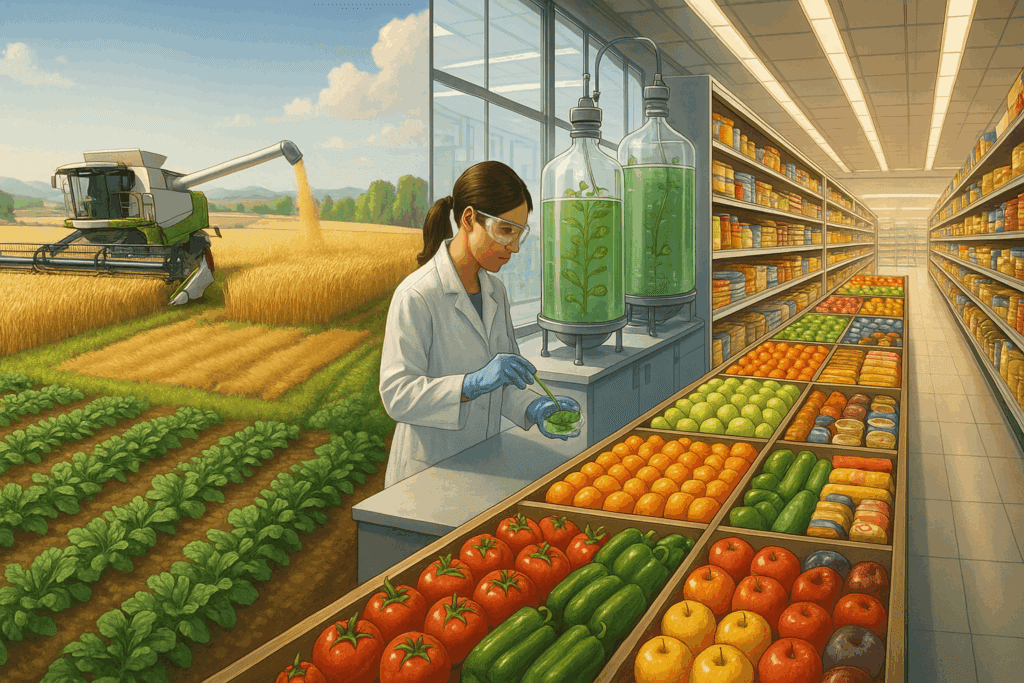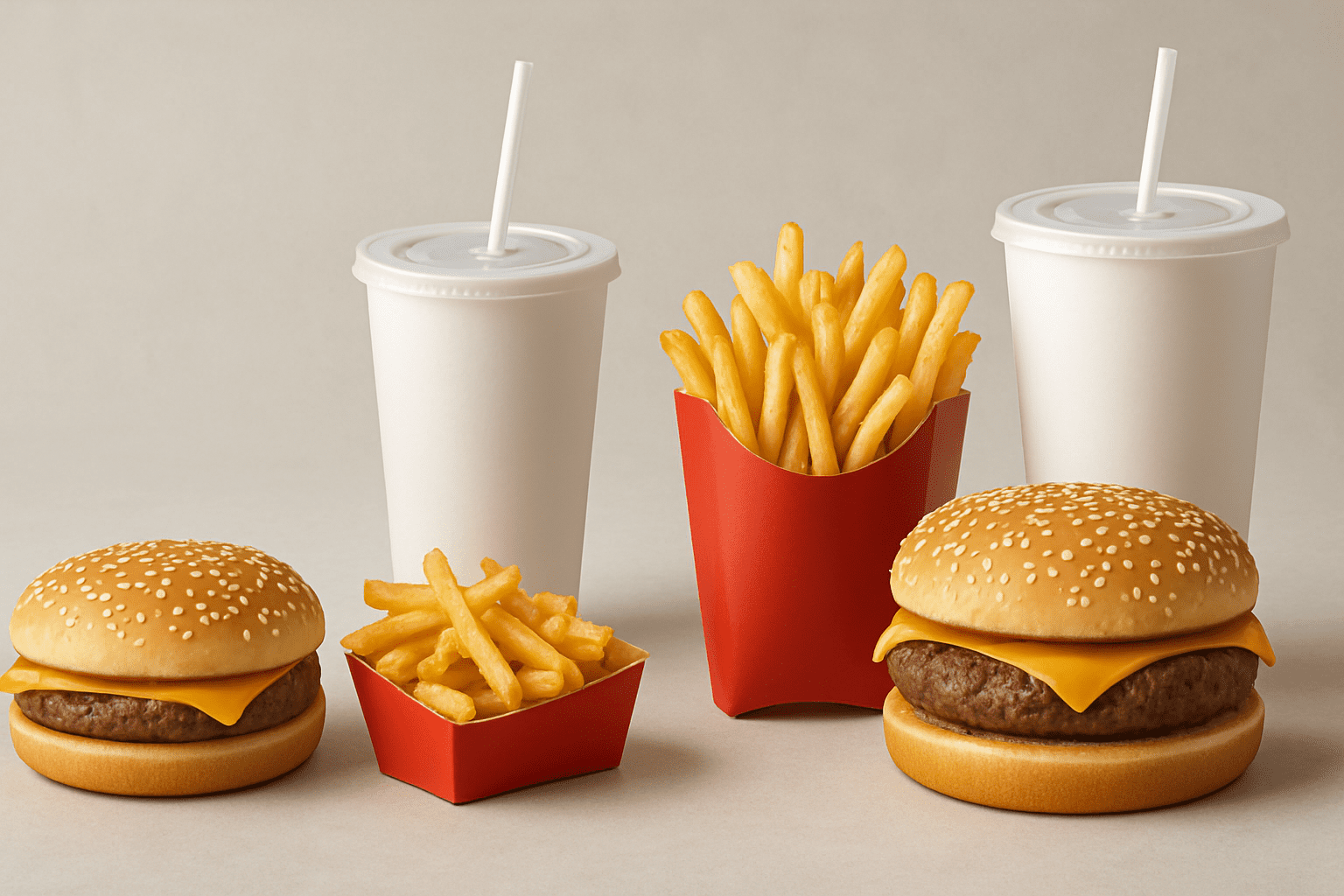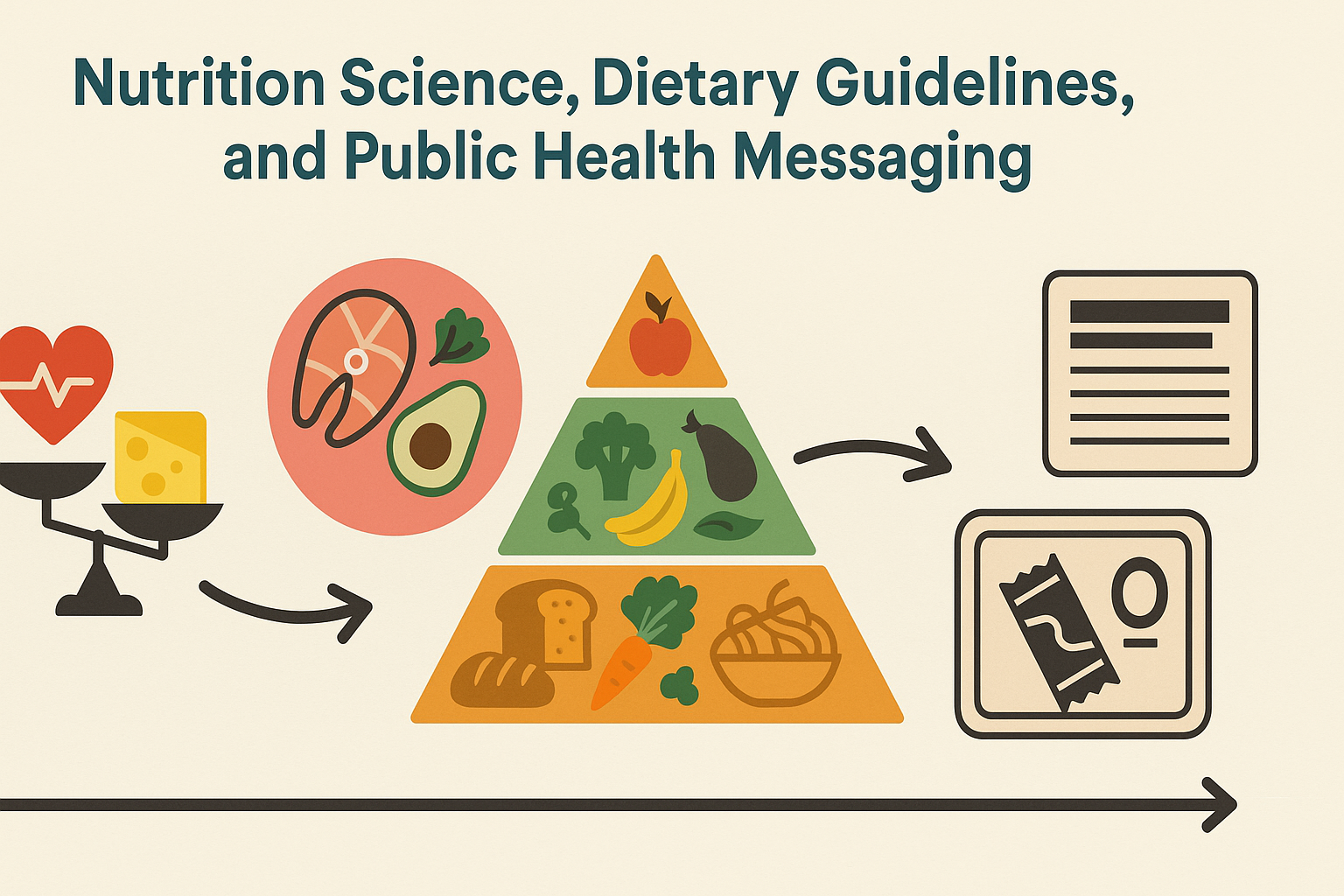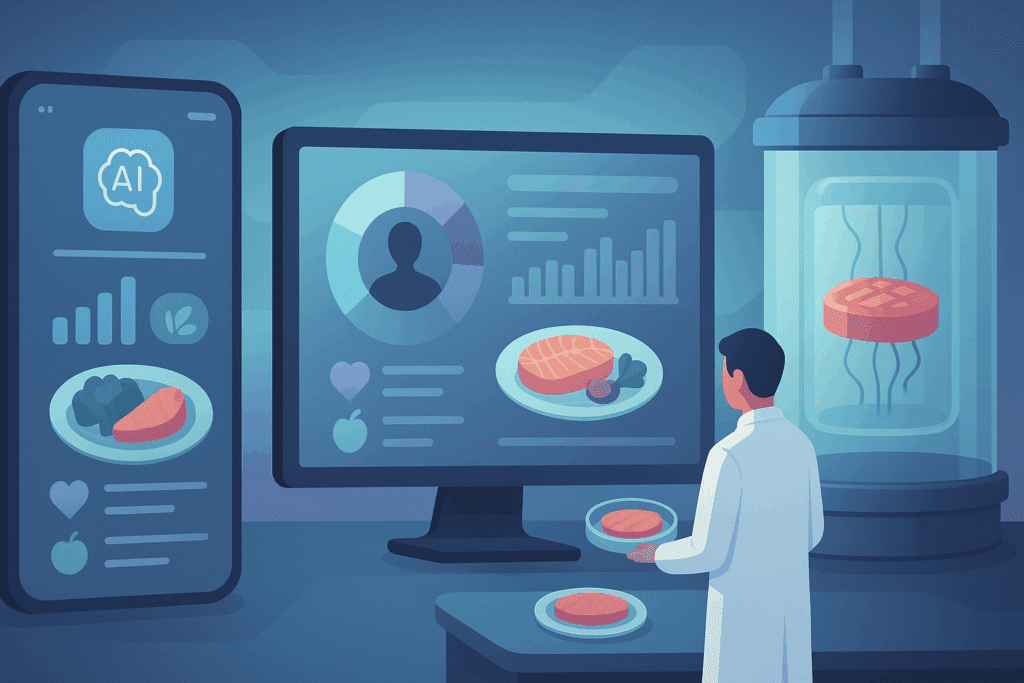Exploring the Evolution of Modern Diets and Nutritional Patterns
In the last two decades, our understanding of food, nutrition, and health has shifted dramatically, alongside how and what people consume on a daily basis. Whether due to socio-economic shifts, food technology innovations, cultural globalization, or public health campaigns, today’s dietary landscape looks significantly different from what it did 20 years ago. This has prompted researchers and nutrition experts to ask an important question: Can people eat more today than 20 years ago? And if so, what are the health, environmental, and cultural implications of this shift? This exploration is not just about caloric intake, but about broader nutritional trends, the types of food people consume, and the societal systems that influence these behaviors. As we examine this topic, we uncover a rich, nuanced history changing topic in nutrition recent decades have witnessed, reflecting both opportunity and concern for future generations.
You may also like: Best Foods for Cognitive Function: What Science Reveals About Brain Nourishment, Focus, and Mental Clarity

From Scarcity to Abundance: The Expansion of Global Food Availability
Over the past 20 years, the availability of food has increased in many parts of the world due to agricultural innovation, improved logistics, and globalized trade networks. Advances in biotechnology have made it possible to grow more food on less land with higher efficiency. Crops genetically engineered to resist pests and withstand extreme weather conditions have improved yields dramatically. At the same time, international food trade has made once-seasonal or exotic foods available year-round in grocery stores across developed and developing countries alike. This has contributed to a perception of food abundance, and in many urban environments, access to food has become almost constant.
The sheer availability of food has naturally influenced consumption patterns. With 24-hour grocery chains, convenience stores, and food delivery apps, food is not only more available but more accessible at all hours of the day. This accessibility has contributed to a phenomenon called “continuous eating,” where traditional mealtime boundaries blur in favor of frequent snacking and grazing. This behavioral trend suggests that yes, people can eat more today than 20 years ago, largely because the systems around them facilitate near-effortless consumption.
However, abundance does not automatically equate to better health. Much of the increased availability comes in the form of ultra-processed foods—high in calories, sugar, fat, and salt—designed to be hyper-palatable and shelf-stable. These developments have coincided with rising rates of overweight and obesity globally. Thus, the story of food abundance is two-fold: while more food can mean less hunger, it also introduces new challenges related to overconsumption and nutritional imbalance.

The Rise of Caloric Intake and the Shifting Energy Equation
Several large-scale dietary surveys and public health studies have reported that average daily caloric intake has increased in many countries since the early 2000s. In the United States, for example, data from the National Health and Nutrition Examination Survey (NHANES) shows that adults today consume more calories per day on average than they did two decades ago. This uptick is not limited to North America. In parts of Asia, Africa, and Latin America, as economic conditions improve, calorie consumption is rising in tandem.
Part of this increase can be attributed to lifestyle changes. As urbanization accelerates and sedentary work becomes the norm, the energy demands of the average adult have decreased. Yet, food availability and marketing strategies have not adjusted accordingly. The mismatch between caloric intake and energy expenditure has contributed significantly to the rise of chronic conditions such as type 2 diabetes, cardiovascular disease, and metabolic syndrome.
Marketing also plays a substantial role. Over the last two decades, food marketing has become more sophisticated, personalized, and omnipresent. From targeted ads on social media to influencer endorsements and psychological packaging designs, the food industry has found increasingly effective ways to stimulate consumption. These strategies often emphasize convenience, indulgence, or health—even when the products themselves may not deliver nutritional value. This marketing saturation supports the argument that people can eat more today than 20 years ago, because the cultural cues around them continuously encourage consumption.

Portion Size Creep and the Supersizing of Normalcy
Another significant factor contributing to increased food intake is the rise in portion sizes, particularly in restaurants and fast food establishments. The term “portion distortion” captures how our perception of a standard serving size has changed over time. For instance, what was once considered a large soft drink in the 1990s is now marketed as a medium, with “extra-large” sizes becoming normalized. Similar trends apply to chips, baked goods, and even home-cooked meals, where recipe websites and influencers promote calorie-dense recipes with generous serving suggestions.
This portion size creep subtly yet effectively conditions people to eat more without realizing it. Over time, larger portions recalibrate our internal cues for hunger and satiety, making it more difficult to regulate food intake based on physiological needs. Moreover, the social and cultural acceptance of larger portions makes it harder to recognize overeating as problematic. As this trend has unfolded, it further supports the reality that people can and do eat more now compared to 20 years ago, not only because of what is available but because of how it is presented.

Cultural Shifts, Eating Environments, and Behavioral Drivers
The way people relate to food has also changed, influenced by broader cultural and societal shifts. In the early 2000s, meal preparation was still relatively common, with family meals representing an opportunity for connection and routine. In contrast, today’s fast-paced lifestyle often prioritizes convenience over tradition. The rise of single-person households, gig economy work hours, and on-demand food delivery services has fundamentally altered eating environments and behaviors.
In many cases, eating has become a secondary activity. People eat while working, commuting, watching television, or scrolling through their phones, which reduces mindfulness and increases the likelihood of overeating. Studies in nutritional psychology have shown that distracted eating correlates with greater calorie intake and reduced satisfaction after meals. These behavioral patterns align with the growing body of evidence that people can eat more today than 20 years ago, often unintentionally, due to lifestyle changes that disrupt natural eating cues.
Additionally, the proliferation of diet trends, from keto to intermittent fasting, has paradoxically contributed to more erratic eating patterns. The constant exposure to new “wellness” rules can create confusion and lead to cycles of restriction and bingeing. While some individuals achieve balance and benefit from structured eating plans, others may experience increased food preoccupation and dysregulated eating. These psychological shifts highlight how complex the history changing topic in nutrition recent decades has become, influenced not just by what we eat, but why and how we eat it.

Nutrition Science, Dietary Guidelines, and Public Health Messaging
Over the last 20 years, nutrition science has advanced considerably, and with it, public health authorities have updated dietary guidelines to reflect new findings. These updates, however, have not always led to clear improvements in dietary quality at the population level. While more people are aware of terms like “macronutrients,” “glycemic index,” and “plant-based diets,” the practical application of this knowledge often lags.
One challenge lies in the complexity of nutrition information. Scientific research is ever-evolving, and headlines often reduce nuanced findings to black-and-white recommendations, creating public confusion. The demonization of fats in the early 2000s, followed by the rise of high-fat diets like keto in the 2010s, exemplifies how dietary advice can swing in extremes. This whiplash undermines trust and may lead people to disengage from nutritional guidance altogether.
Nevertheless, public health campaigns have achieved some success. Trans fats have been largely phased out in many countries, and menu labeling laws have increased awareness of calorie content in restaurants. But these efforts must be understood in the broader context of competing forces—namely, the food industry’s capacity to adapt and market new products faster than regulators can respond. Consequently, even as knowledge expands, so too does the potential for increased food intake, especially when healthier choices remain less accessible or more expensive.
Economic Inequality and the Nutrition Divide
While food abundance has increased overall, it has not been distributed equally. Socioeconomic status remains a strong predictor of diet quality. In low-income communities, calorie-dense, nutrient-poor foods are often cheaper and more available than fresh, whole foods. This economic divide influences not only what people eat but how much they can afford to eat. Food insecurity paradoxically coexists with obesity, as individuals facing financial hardship may consume more low-cost, high-calorie foods to stave off hunger.
Food deserts, defined as areas with limited access to affordable and nutritious food, continue to affect dietary patterns in both urban and rural areas. While policies and initiatives aim to improve food equity, systemic barriers remain. These disparities highlight that while people can eat more today than 20 years ago on a global average, this trend does not affect all populations uniformly. Understanding this inequality is essential for developing targeted interventions that address both overconsumption and malnutrition.
Moreover, economic shifts over the past two decades—including stagnating wages and rising food prices—have further strained household food budgets. This context underscores how external forces shape individual dietary behaviors. When faced with limited resources, people may prioritize calories over nutritional quality, reinforcing cycles of poor health and reinforcing the importance of broader social and economic reforms in shaping nutrition trends.

Technology, Personalization, and the Future of Eating
Emerging technologies are reshaping how we think about food and nutrition. Personalized nutrition, fueled by advancements in genetic testing, microbiome research, and AI-driven diet planning, promises a future where eating is tailored to individual biology. While still in its infancy, this approach has the potential to counteract some of the broad-brush dietary guidelines that have failed to resonate with diverse populations.
Wearable devices and health-tracking apps have also influenced eating behaviors, with some users reporting improved awareness of food intake and lifestyle habits. However, these tools are not immune to the same societal pressures that have led to overconsumption. For instance, calorie-counting apps can become obsessive for some users, while others may gamify eating in ways that prioritize metrics over well-being.
Food tech innovations, such as lab-grown meat and plant-based meat alternatives, also signal a shift in the kinds of foods people consume. These products aim to address environmental and ethical concerns while offering sensory experiences comparable to traditional meat. Yet their health implications remain under investigation, and consumer adoption varies widely by region and cultural preference.
Ultimately, technology alone cannot address the deeper psychological, cultural, and economic factors that influence why and how much people eat. While innovation plays a role, sustainable change will require a holistic understanding of the complex systems that shape human nutrition. The question of whether people can eat more today than 20 years ago is intimately tied to the ongoing evolution of these systems.
Frequently Asked Questions (FAQ) about Nutrition and Food Trends
- How has the history of nutrition changed in recent years?
The history of nutrition has witnessed significant changes in recent decades. Advances in scientific research and evolving dietary guidelines have revolutionized our understanding of nutrition and its role in health. A particularly history-changing topic in nutrition recent is the increased focus on plant-based diets and their health benefits. These dietary patterns are associated with lower risks of chronic diseases, such as heart disease and diabetes, as they emphasize whole foods and minimize processed ingredients. Moreover, changes in food production methods and greater consumer awareness of food origins have reshaped how we approach nutrition. As our understanding of microbiomes and personalized diets grows, the future of nutrition may shift toward more customized dietary plans.
- Can people eat more today than 20 years ago?
Yes, the amount people can eat today compared to 20 years ago has increased significantly. This change can be attributed to several factors, such as larger portion sizes, more accessible high-calorie foods, and a shift towards less nutritious processed foods. With the proliferation of fast food chains and snack products, the average calorie intake has risen steadily. The history-changing topic in nutrition recent also highlights the growing availability of highly processed, calorie-dense foods that make it easier to overconsume. While some may argue that modern diets allow for greater consumption, this trend is often linked to an increase in obesity rates and related health problems. On the flip side, better knowledge of food labeling and nutrition has allowed many people to make more informed choices and regulate their intake.
- How have modern food trends impacted overall health?
Modern food trends have both positive and negative effects on health. On one hand, trends like the popularity of superfoods, plant-based diets, and intermittent fasting have led to healthier eating patterns and a better understanding of nutrition. The focus on fresh, whole foods is a history-changing topic in nutrition recent, showing that clean eating can benefit both physical and mental health. However, trends like extreme dieting and the overuse of processed food alternatives can negatively impact health in the long term. Over time, people are becoming more conscious of how food affects everything from energy levels to longevity, leading to a balanced approach in dietary choices that prioritize health and sustainability.
- What role does portion control play in modern nutrition?
Portion control is a critical factor in managing one’s diet in the modern world, particularly given the rise of calorie-dense foods. Studies show that can people eat more today than 20 years ago is directly linked to the increase in portion sizes, especially in restaurants and fast-food chains. The concept of mindful eating, which encourages paying attention to portion sizes and hunger cues, has become a key aspect of nutrition education. This awareness can prevent overeating and help individuals maintain a healthy weight, supporting both short-term and long-term health. By focusing on portions rather than the types of food consumed, individuals can better balance their intake without restricting food variety.
- What are the emerging trends in nutrition that might shape the future of diets?
Emerging trends in nutrition that could shape future diets include the increased use of artificial intelligence (AI) to create personalized dietary plans based on genetic makeup and health needs. The history-changing topic in nutrition recent has shown that personalized nutrition is becoming more accessible, allowing for recommendations tailored to an individual’s unique biological characteristics. Another trend is the rise of sustainable eating practices, such as lab-grown meats and insect protein, which could provide more environmentally friendly alternatives to traditional animal products. Additionally, the use of gut microbiome analysis to guide diet choices is gaining popularity, revealing how bacteria in the digestive system can influence overall health and well-being.
- How does modern food labeling affect consumer choices?
Food labeling plays a significant role in guiding consumer decisions in today’s food market. Modern labels often include nutritional facts, ingredient lists, and claims related to sustainability or health benefits, which help consumers make informed choices. The history-changing topic in nutrition recent includes the growing transparency in food labeling, especially with the rise of organic and non-GMO certifications. This allows consumers to be more selective about the foods they consume, supporting healthier eating habits. However, some argue that labels can be misleading due to marketing strategies that emphasize specific nutrients while hiding others, so consumers should always read labels carefully and be aware of how food marketing influences their choices.
- What impact does the shift towards plant-based diets have on global health?
The shift towards plant-based diets is one of the history-changing topic in nutrition recent and is positively impacting global health by reducing the prevalence of chronic diseases. Plant-based diets are rich in fiber, antioxidants, and other nutrients that promote heart health, improve digestion, and reduce inflammation. Research has shown that this type of diet is associated with lower cholesterol levels, better blood sugar regulation, and reduced cancer risks. The growing adoption of plant-based diets also benefits the environment by reducing the carbon footprint associated with meat production. As more people adopt plant-based diets, public health initiatives are increasingly advocating for plant-centric eating to improve global health outcomes.
- What are the potential risks of high-calorie foods in modern diets?
High-calorie foods, particularly those high in refined sugars, fats, and artificial ingredients, pose significant risks to modern diets. The can people eat more today than 20 years ago phenomenon contributes to an overconsumption of such foods, leading to rising obesity rates and associated diseases like type 2 diabetes and heart disease. In addition to the direct health risks, these foods may also affect mental health by contributing to mood swings, stress, and anxiety. Nutritional experts emphasize the need for a balanced diet that minimizes these high-calorie foods in favor of nutrient-dense options. A growing understanding of the long-term consequences of excessive calorie intake is prompting health organizations to encourage more mindful eating habits.
- How do modern food processing techniques affect nutritional quality?
Modern food processing techniques have significantly altered the nutritional quality of many foods. The history-changing topic in nutrition recent includes the increasing use of methods that strip away vital nutrients from foods, such as vitamins, minerals, and fiber. Processes like refining grains and hydrogenating oils lead to foods that are lower in essential nutrients and higher in unhealthy fats and sugars. On the other hand, advancements in food preservation, such as freeze-drying and vacuum-sealing, have allowed for more nutritious options, such as freeze-dried fruits and vegetables, to reach consumers. Therefore, while food processing can extend shelf life and convenience, it often comes at the cost of nutritional value.
- What are the psychological benefits of improving diet in modern society?
Improving one’s diet has been shown to provide significant psychological benefits, particularly in the context of mental health. Studies suggest that eating a well-balanced diet with plenty of nutrients has a direct impact on mood regulation, cognitive function, and overall mental clarity. The history-changing topic in nutrition recent highlights the emerging research on the link between gut health and brain health, suggesting that the foods we eat can influence our mental well-being through the gut-brain axis. Additionally, focusing on nutrient-dense foods, such as fruits, vegetables, and omega-3 fatty acids, can reduce symptoms of anxiety and depression. As awareness of these mental health benefits grows, more individuals are turning to diet as a tool for improving not just physical health but also emotional and cognitive wellness.
Conclusion: A New Nutritional Landscape: Reflecting on the Past, Preparing for the Future
As we reflect on the evolving dynamics of human nutrition, it becomes evident that the answer to whether people can eat more today than 20 years ago is multifaceted. Increased food availability, larger portion sizes, changing cultural norms, technological advancements, and economic disparities have all converged to create a nutritional landscape vastly different from that of the early 2000s. The history changing topic in nutrition recent years has witnessed offers profound insight into how society influences dietary behavior on both individual and systemic levels.
Understanding this transformation is essential not only for personal health but for public policy, environmental sustainability, and food justice. As we move forward, the goal should not be merely to consume more or less, but to eat better, more mindfully, and more equitably. Empowering individuals with accurate information, fostering environments that support healthy choices, and addressing the root causes of dietary inequality are key steps in this process.
So, while people can eat more today than 20 years ago, the real question may be: should they? And if not, how can society work together to reshape the food systems, cultural habits, and economic structures that have made overconsumption a modern norm? This moment calls for reflection, innovation, and commitment to creating a healthier, more sustainable future for all.
changing food consumption habits, nutritional epidemiology, overconsumption risks, modern eating patterns, global nutrition transition, portion size evolution, food environment studies, socio-nutritional disparities, processed food trends, digital diet tracking, mindful eating strategies, fast food culture impact, sedentary lifestyle and nutrition, urban food systems, personalized nutrition technology, obesity and public health, caloric intake trends, global diet shifts, nutrition and economic inequality, historical diet comparisons
Further Reading:
Changing diets and the transformation of the global food system
Disclaimer: The content published on Better Nutrition News (https://betternutritionnews.com) is for informational and educational purposes only. It is not intended as a substitute for professional medical advice, diagnosis, or treatment. Always seek the guidance of a qualified healthcare professional before making any changes to your diet, nutrition, or wellness practices. The opinions expressed by authors and contributors are their own and do not necessarily reflect those of Better Nutrition News.
Better Nutrition News and its affiliates make no representations or warranties regarding the accuracy, completeness, or reliability of the information provided. We disclaim all liability for any loss, injury, or damage resulting from the use or reliance on the content published on this site. External links are provided for reference purposes only and do not imply endorsement.



